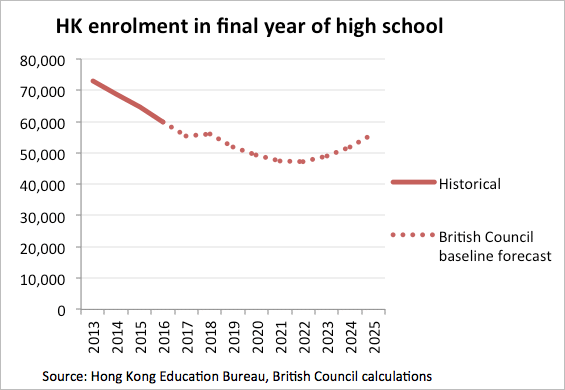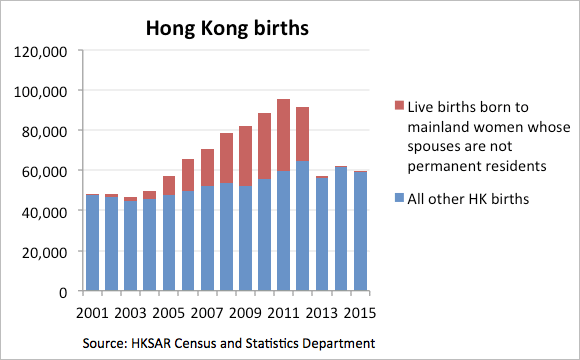
Our analysis shows that Hong Kong’s high school graduate numbers will continue to dwindle over the over the next five years, but a substantial recovery could be in the offing thereafter.
Though small in size, Hong Kong has long punched above its weight as a student recruitment market for the UK education sector. It is the second largest sending market to our boarding schools1, the third largest for our undergraduate programmes and seventh largest for UK higher education overall2. But like many other developed Asian economies, Hong Kong’s population is rapidly greying, with a shrinking youth demographic and a rising number of retirees. Does this spell trouble for UK student recruitment in the market? Our analysis shows that Hong Kong’s high school graduate numbers will continue to dwindle over the over the next five years, but a substantial recovery could be in the offing thereafter.
Analysis
While student mobility is influenced by multiple factors, a smaller school population is undoubtedly creating a drag on international recruitment. According to Home Office statistics, study visa issuance to Hong Kong residents declined by 1.4 per cent year on year in the first three quarters of 2016 and Child Student visa issuance dropped by 9.7 per cent. UCAS acceptances also declined by 1.6 per cent in 2016.
The total number of students enrolled in the final year of high school plummeted by 13,136 from 2013 to 2016, a decline of 18 per cent, according to data from the HKSAR Census and Statistics Department.
Yet our analysis suggests that the free-fall will not continue. Based on current primary and secondary school enrolments, we have projected Year 6 secondary school numbers to 2025. While the number of students in the final year of high school will continue to gradually decline over the next five years, a rebound is set to begin in 2023.

The recovery may in fact prove to be more robust than our baseline forecast predicts, thanks to a boom in birth tourism from mainland China during the previous decade In 2001, the Hong Kong courts ruled that Chinese citizens born in the SAR are permanent residents regardless of the status of their parents, thus granting them access to Hong Kong’s social services and education system. Mainland births in Hong Kong subsequently soared to a peak of over 35,000 in 2011 before public outcry led the government to curb mainlanders’ access to both public and private obstetrics services in 2013.

It is unclear how many of these children will exercise their right to access Hong Kong’s education system, but surveys conducted by the Census and Statistics Department found that 57 per cent of parents intend for their child to eventually reside in the SAR3. An influx of additional mainland students, though controversial in domestic politics, could significantly boost enrolments. The effect on secondary school graduates will likely become apparent starting in 2023.
In summary, while Hong Kong’s demographic shift will likely pinch student recruitment over the next five years, the market is neither dead nor dying. Although UK recruitment in the SAR has suffered in recent years, the declines have been much milder than the drop in student population. On the bright side, the number of international school students (who tend to be more likely to study abroad than their peers in public schools) has actually been on the rise, expanding by 16 per cent from 2010 to 2015. The UK sector has also steadily gained market share over the other major English-speaking study destinations as outbound numbers have contracted.
Keeping recruitment steady over the next five years will require institutions to invest in capturing an even larger slice of the pie. But these near-term investments could pay dividends when the addressable market returns to growth.
1 Independent Schools Council census
2 Higher Education Statistics Agency via SIEM
3 “Demographic trends in Hong Kong, 1981 – 2011”, HKSAR Census and Statistics Department, http://www.statistics.gov.hk/pub/B1120017032012XXXXB0100.pdf

Add new comment
Please note that comments by non-members are moderated. They do not appear on the site until they have been approved. Comments by registered members appear here immediately. Your email address will not be published. All fields are required.